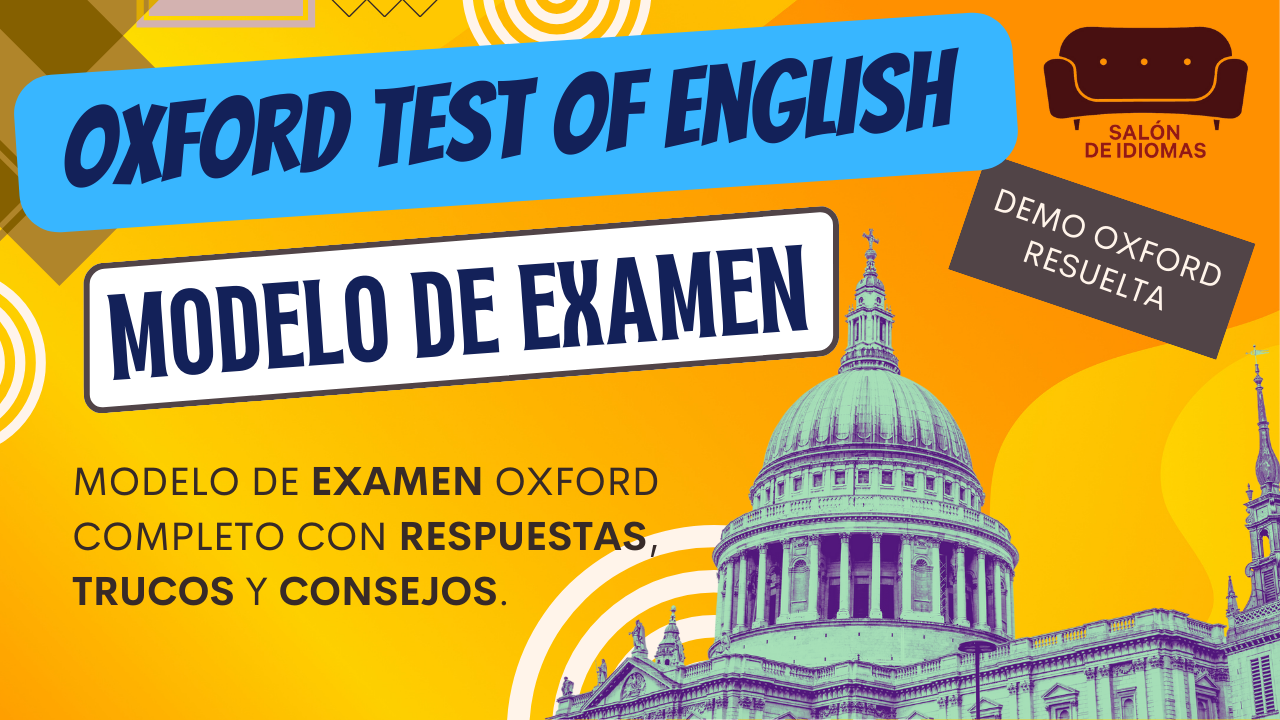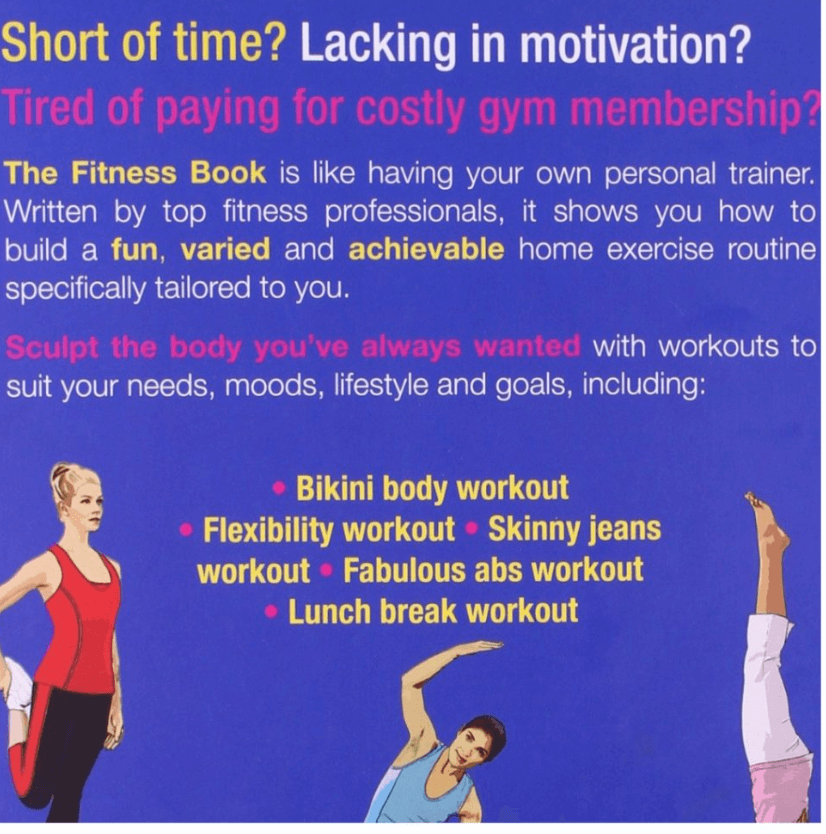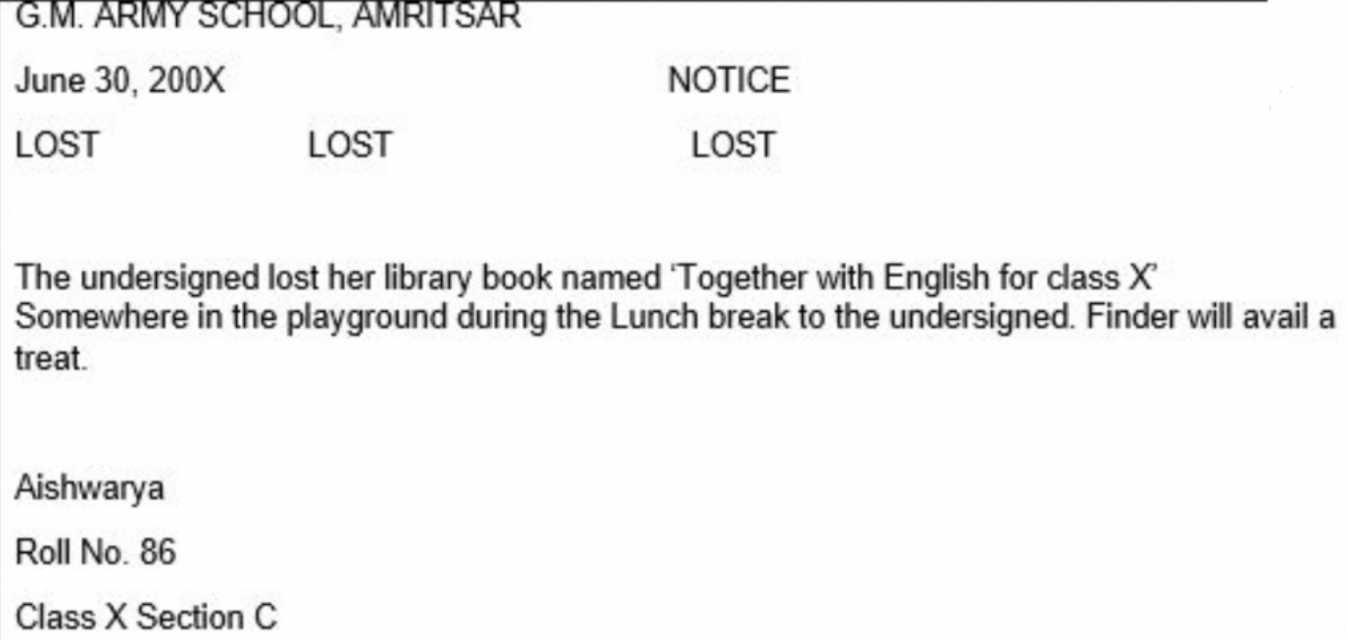
21 Mar 2024 Examen Oxford Resuelto: Modelo completo (con respuestas + tips)
Examen Oxford Resuelto: preguntas, respuestas y tips
¿Te gustaría experimentar cómo es un examen Oxford Test of English de primera mano? En esta entrada de blog de Salón de Idiomas vamos a ver un examen Oxford resuelto completo con respuestas (niveles A2-B1-B2) y vamos a analizar cómo podríamos contestar en cada habilidad. Te queremos recordar que este mismo examen lo puedes hacer online en nuestra demo gratuita Oxford en la plataforma de Salón de Idiomas.
Eso sí, este artículo está repleto de consejos, cosa que no encontrarás en la demo. Por lo que te recomendamos que sigas leyendo porque hay mucha información que necesitas saber. Vas a descubrir cómo hacer una prueba Oxford Test of English General de 10 con este modelo completo de examen Oxford que hemos creado para vosotros en Salón de Idiomas.
¿No sabes qué examen de inglés es mejor para ti? Echa un vistazo a esta página en la que te orientamos según tu perfil.
Así pues, sin más preámbulo, pasemos a analizar el modelo de examen Oxford completo que hemos elaborado para ti. Eso sí, primero os dejamos la estructura de la prueba para que veáis las tareas a realizar en el examen y los tiempos que hay que dedicar cada parte:
Estructura del examen Oxford Test of English
| MÓDULO | Nº de PARTES | Nº de TAREAS | Nº de PREGUNTAS |
| Speaking 🕐 15 min. | 4 | 6 | 15 |
| Listening 🕐 30 min. | 4 | 12 | 20 |
| Reading 🕐 35 min. | 4 | 9 | 29 |
| Writing 🕐 45 min. | 2 | 2 | 2 |
| TOTAL 🕐 2 hora aprox. | 14 | 29 | 59 |
📌 Módulo Speaking del examen Oxford resuelto
🕐 15 minutos aproximadamente
El Speaking del examen Oxford se realiza online y todo funciona mediante grabaciones. Es decir, no hay una persona real que nos pregunta en el momento, sino que hay que contestar a preguntas que nos aparecen en la pantalla en el tiempo que nos marca la grabación.
¿Realmente buscas el C1? Consulta aquí cómo preparar el Speaking Oxford C1 Advanced
El Speaking del examen Oxford A2-B1-B2 consta de 3 partes fundamentales y de una sección de “follow-up questions” (o preguntas relacionadas) sobre la parte 3.
Estructura del Speaking Oxford A2-B1-B2 General:
| Parte | Tareas |
| 1 | Interview 8 preguntas sobre temas cotidianos. 10 segundos por parte. |
| 2 | Voicemails 2 mensajes de voz en respuesta a dos situaciones distintas. 20 segundos para pensar y 40 seg. para grabar el mensaje. |
| 3 | Talk Pequeño monólogo sobre un tema concreto. 30 segundos para pensar y 1 min. para hablar y grabar el mensaje. |
| 4 | Follow-up questions 6 preguntas de seguimiento sobre el monólogo de la parte 3. 30 segundos para contestar cada pregunta. |
Ejemplos de preguntas y de respuestas del Speaking Oxford
En las partes 1 y 2 del Speaking Oxford las instrucciones vienen en audio y por escrito, desapareciendo este último en las partes 3 y 4. Analicemos el examen del Speaking OTE de nuestra demo con posibles respuestas y consejos.
✓ Ejemplos de preguntas de la Parte 1 del Speaking Oxford: Interview
Part 1. Interview
You are going to answer eight questions. Start speaking when you hear this tone.
- What’s your name?
- Which country do you come from?
CONSEJOS:
En las primeras preguntas es recomendable ser escueto y no hablar más de la cuenta; contesta con respuestas cortas.
Tras las primeras simples preguntas, se te harán otras más variadas pertenecientes a varios temas. Y ¡Sí!, los temas se mencionan también. Veamos ejemplos de preguntas del speaking Oxford de la primera parte:
Hobbies and free time
- When was the last time you tried something new and exciting?
- How has the way we spend our free time changed in recent years?
- Where do you normally spend your spare time?
Education
- Have you got a university degree? If not, why not?
- Do you enjoy learning languages or do you prefer other topics?
- What is the best way to learn something new?
✓ Tips de Salón de Idiomas para responder el Speaking Oxford
- Reacciona a las preguntas con alguna frase/expresión corta. El objetivo es ganar algo de tiempo para idear una respuesta: E.g., Oh, that ‘s an interesting question!
- Varía las palabras clave de la pregunta: E.g., “enjoy” -> “take pleasure in”, “find pleasure in”.
- Utiliza expresiones del día a día → 100 Expresiones en inglés para el día a día: habla como un nativo
- Varía tu léxico con phrasal verbs → 25 Phrasal verbs en inglés que debes saber (lista+ejemplos)
- Introduce adverbios intensificadores para dar fluidez a tu respuesta → Intensifiers: lista de adverbios intensificadores en inglés (ejemplos)
✓ Ejemplo de respuesta de la primera pregunta del Speaking Oxford
“When was the last time you tried something new and exciting?”
Oh, that’s a question I haven’t thought of in a long time! Actually, I believe the last time I did something out of the ordinary was this summer. After much pressure on my friends’ end, I gave in and went surfing with them. I had never done that before and it was awesome. I really recommend it.
Reacción a la pregunta
Adverbio en -ly que da fluidez
Sinónimo de la palabra clave “new and exciting”
Expresión del día a día
Phrasal verbs
Si bien la decoración es fundamental, hay que hacer todos los pasos que el enunciado los pide; sino nuestro ejercicio puede estar mal y puede que no nos puntúe.
Prepara tu examen oficial Oxford con Salón de Idiomas
📢 Somos Centro Examinador Oficial de Oxford en Madrid
¡Infórmate de nuestros cursos!👇🏽
✓ Ejemplos de preguntas de la Parte 2 del Speaking Examen Oxford: Voicemails
Voicemail 1 🎙
You are going to leave a voicemail message.
First read and listen to the task and decide what you want to say.
You have 40 seconds to leave your voicemail.
You would like to go to a new gym club with your friend. Leave a voicemail message for your friend and:
- invite your friend to the gym club
- explain what you can do there
- suggest a time and place to meet.
You now have 20 seconds to think about what you want to say.
✓ Recomendación de Salón de Idiomas para responder
- Aprende a iniciar conversación con preguntas. El objetivo es ser capaz de abrir el tema de tu audio: E.g., Hey, how is it going?
- Introduce tus frases (statements): E.g., You know…?
- Usa adverbios en -ly para proveer fluidez → Intensifiers: lista de adverbios intensificadores en inglés (ejemplos)
- Introduce phrasal verbs para dar un toque informal → 25 Phrasal verbs en inglés que debes saber (lista+ejemplos)
- Utiliza expresiones cotidianas → Hablando como un pro: expresiones de speaking nivel avanzado
- Aprende a hacer sugerencias, recomendaciones y preferencias → Expresiones en inglés de sugerencia, preferencia y recomendación
- Usa sinónimos a la hora de dar tu opinión: I believe, I reckon, etc. Sinónimos en inglés: ejemplos para el día a día y exámenes orales
✓ Ejemplo de respuesta al primer voicemail del Speaking Oxford
You would like to go to a new gym club with your friend. Leave a voicemail message for your friend and:
- invite your friend to the gym club
- explain what you can do there
- suggest a time and place to meet.
You now have 20 seconds to think about what you want to say.
Oh, hi Mark! What’s cracking? You know I go to the gym on a daily basis, so I was thinking you might fancy coming with me one day. We could work out and, most fun, we could go to the sauna my gym has at its members’ disposal. What about Saturday morning at 10 am opposite the gym? Just let me know, ok? Bye!
Como podéis ver, hemos hablado de todo lo que nos pedía el enunciado: hemos invitado al amigo, le hemos contado qué podríamos hacer en el gym y le hemos sugerido una hora, un día y lugar para quedar.
Hacemos una pregunta
Usamos expresiones cotidianas
Expresión de sugerencia
Phrasal verb
Si bien la decoración es fundamental, hay que hacer todos los pasos que el enunciado los pide; sino nuestro ejercicio puede estar mal y puede que no nos puntúe.
Voicemail 2 🎙
You are going to reply to a voicemail message. First read and listen to the task and decide what you want to say. You have 40 seconds to leave your voicemail. Start speaking when you hear the tone.
“Hey Shelley, this is Evan Fleming calling from . I thought of you because I’m working with an active footwear brand that’s seen about a 20% increase in reorders, and I think that I could help your brand do the same, but I’m not exactly sure. So if you could give me a call back at . Again, this is Evan. Thanks!”
Then, leave a voicemail message for your friend. In your message, you should:
- show gratitude to your friend
- ask some questions about her will to help you
- say what you think your friend should do.
Now listen to the message.
You now have 20 seconds to think about what you want to say.
✓ Ejemplos de preguntas de la Parte 3 del Speaking Examen Oxford: Talk
You are going to give a talk.
You are going to give a talk to your English class about different types of fashion styles.
Choose two photographs. Tell your class when it is more suitable to wear these two kinds of clothes.
You now have 30 seconds to think about what you want to say and then 1 minute to talk.
Imágenes




✓ Recomendación de Salón de Idiomas
- Ten siempre una fórmula de comienzo de tu charla
- Introduce conectores en inglés
- Usa adverbios en -ly para proveer fluidez → Intensifiers en inglés
- Haz uso de expresiones de nivel más avanzado: e.g., inversiones → Inversiones en inglés nivel avanzado
- Utiliza expresiones cotidianas → 100 Expresiones en inglés para el día a día
- Usa sinónimos de tus palabras clave
- Usa phrasal verbs siempre que puedas → 25 Phrasal verbs en inglés
✓ Ejemplo de respuesta de la parte 3 del Speaking Oxford
Hello, everyone! I will expound on the topic of fashion styles. There is certainly plenty to talk about, so shall you have any questions feel free to raise your hand!
On the one hand, an aspect we need to bear in mind is which outfit is more suitable for certain occasions or seasons. For instance, a look containing long black trousers, heels and purses is appropriate for office and work related activities. Conversely, short jeans and hats lend themselves to be worn in hot weather and casual encounters. That is, not only should you bear in mind the circumstances but also the weather.
On the other hand, fashion is not just about wearing nice clothes. Choosing your garments and accessories accordingly is what makes you stylish. Be aware of the tiniest details you wear, from the nail polish to the jewellery. Even in casual looks, those details need to be taken care of.
Empezamos con una fórmula que introduce nuestro tema
Usamos conectores para dar lógica y coherencia a nuestro discurso
Proveemos fluidez con adverbios intensificadores
Introducimos sinónimos de “clothes” (palabra clave de nuestro tema) para variar el léxico
Hacemos uso de expresiones de nivel avanzado como dos pasivas y una inversión
Metemos expresiones cotidianas para demostrar dominio de la lengua
Usamos phrasal verbs para hablar como un nativo
Como comentábamos antes, la decoración es importante, pero en una respuesta tan larga tu pronunciación, entonación, coherencia y hablar de lo que se te pide es fundamental.
Prepárate antes de un examen con nuestros Cursos Puente
Diseñados exclusivamente para desarrollar habilidades lingüísticas antes de un examen
¡Infórmate, te asesoraremos encantados!
✓ Ejemplos de preguntas de la Parte 4 del Speaking: Follow-up questions
You are going to answer six questions about your talk.
The talk was about fashion:
- Tell me how much money you usually spend on clothes a year.
- Is the way you dress important?
- What does the way you dress say about your personality?
- What items of clothing are worth spending a lot of money on?
- Do you think that a model’s job is difficult?
- Would you like to work in a clothes shop?
✓ Recomendación de Salón de Idiomas para responder correctamente
- Reacciona a la pregunta
- Utiliza sinónimos al dejar tu opinión: I reckon
- Usa adverbios en -ly para proveer fluidez → Adverbios intensificadores en inglés
- Haz uso de expresiones de nivel más avanzado: e.g., condicionales → Condicionales en inglés
- Utiliza expresiones cotidianas → 100 Expresiones en inglés para el día a día
- Usa sinónimos de tus palabras clave
- Usa phrasal verbs siempre que puedas → Phrasal verbs nivel avanzado
✓ Ejemplo de respuesta de la parte 4, primera pregunta Speaking Oxford
“Tell me how much money you usually spend on clothes a year.”
That’s definitely an interesting question! I reckon I tend to waste much on garments and I say “waste” because I indeed allocate too much to clothes I eventually never wear. So, If I were to give an amount, I would say I might spend over 500€ on a yearly basis just on fashion.
Estamos reaccionando
Damos nuestra opinión con palabras distinta a “In my opinion”
Usamos sinónimos de las palabras clave de “spend”, de “clothes” y de “a year” sin apenas repetir las palabras clave.
Usamos expresiones de nivel avanzado como los condicionales
Metemos adverbios para dar fluidez
Usamos expresiones del día a día
📌 Módulo de Listening del examen Oxford resuelto
🕐 30 minutos aproximadamente
El Listening del examen Oxford niveles A2-B1-B2 tiene básicamente un sólo planteamiento: elegir la opción correcta. Esto quiere decir que, a diferencia de otros exámenes de inglés cuyos planteamientos de ejercicios en el Listening varían bastante, aquí sólo tendremos que prestar atención y seleccionar la respuesta correcta de la opción múltiple.
Estructura del Listening Oxford General:
| PARTES | TAREAS |
| 1 | Multiple choice – picture options (30 seg. para leer las preguntas.) Escuchar 5 charlas (monólogos/diálogos) cortas sobre un tema y contestar a preguntas tipo test (A, B o C) acompañas de imágenes. |
| 2 | Note-completion (30 seg. para leer las preguntas.) Escuchar un monólogo más largo con planteamiento de preguntas de opción múltiple (A, B o C). Cada opción tiene el objetivo de completar las preguntas. |
| 3 | Matching opinions with people who say them (30 seg. para leer las preguntas.) Escuchar un diálogo más largo entre dos personas (hombre y mujer) con preguntas de opción múltiple destinadas a identificar quién dice qué (hombre, mujer o ambos). |
| 4 | Multiple choice (30 seg. para leer las preguntas.) Escuchar 5 monólogos/diálogos cortos con 3 preguntas de opción múltiple cada uno. |
Como has visto hasta aquí nuestro artículo de un examen Oxford modelo completo con respuestas trae mucha información. No vamos a dejar el listening con menos consejos que la parte de Speaking que acabamos de ver. Así pues, antes de realizar el ejercicio de comprensión oral te dejamos unos trucos generales para conseguir elegir la respuesta correcta en el Listening del examen Oxford General (A2-B1-B2):
- escucha a conciencia y de forma activa intentando captar el mensaje general. En la primera audición toma nota mental de lo que crees escuchar y la segunda vez que lo escuches intenta confirmar tus datos.
- presta atención a los detalles (cifras, lugares, parte del día, etc.)
- acostumbrate a los temas que más se suelen repetir en exámenes oficiales (holidays, environment, healthy lifestyle, etc.)
- estudia la gramática correspondiente a tu nivel
- no te dejes engañar por las negativas de los interlocutores o sus tonos de voz
Ahora, aquí dejamos los ejercicios del audio para que los hagáis y al final del todo os explicamos por qué las respuestas son las que son. ¡Mucha suerte!
Demo Módulo Listening OXFORD
Ejemplos de preguntas del Listening del examen Oxford resuelto
✓ Part 1. Preguntas Interview Listening Oxford
Listen and choose the correct picture (A, B, or C).
1. Which activity did the boy enjoy most during his holiday? 3 imágenes



2. Where did the students go on their school trip? 3 imágenes



3. Where did the boy go with his family on the weekend? 3 imágenes



4 What homework does the girl have to do tonight? 3 imágenes



5. What is the girl going to bring for the picnic? 3 imágenes



✓ Part 2 Listening Oxford
Listen to an expert on a radio programme talking about criminal actions. Choose the correct answer (A, B, or C) for each gap (1–5). The first one (0) has been done for you. You now have 30 seconds to look at the task.
CRIMINALS’ COMMON PROTOCOL
0 George Leonidas…
A Planned his robberies
B Wasn’t actually a robber
C Was a building inspector
When thieves enter the bank
1 The most challenging part of the beginning of a robbery is…
A Breaking into the bank
B Escaping without being detected
C Digging tunnels to escape
2 Why avoid getting arrested does not endure?
A Because of banks’ security
B Because of the police training
C Because of the banks’ location
When criminals are caught
3 After arresting the robbers, officers…
A Look for guns
B Sentence the charge
C Look for evidence
At the jury
4 What happens to the criminals when they are in court?
A Their sentence can worsen if they don’t admit guilt
B If their case is too strange the judge will soften the sentence
C Judges will send them to prison and sentence later
5 James Verone…
A Was a polite criminal
B Wanted to trick the system
C Needed special care
✓ Part 3 Listening Oxford
Listen and interview where two experts discuss meteorites. Match the speakers (woman, man, or both) to the opinions below. The first one (0) has been done for you. You now have 30 seconds to look at the task.
0 Humankind mustn’t be distressed by meteorite impacts. WOMAN
1 More research should be carried out to detect meteorites.
2 Large comet sightings are scarce.
3 Tiny meteorites are not a menace to humans
4 A meteor strike wasn’t actually what extinct the dinosaurs..
5 The meteor in Russia was threatening.
✓ Part 4 Listening Oxford
Listen and choose the correct answer (A, B, or C).
1 You hear an interview with a man who teaches people to ride a bicycle, He says that the adults he teaches…
A Take the lessons more seriously than kids do.
B Are more likely to feel embarrassed than kids.
C Worry less about making mistakes than kids do.
2 You hear two friends talking about a rock concert they went to. What do they agree about?
A Some of the acts were a bit disappointing.
B The venue wasn’t really suitable.
C The tickets were good value for money.
3 You hear some information on a travel programme. Which holiday destinations have become more popular this year?
A City Breaks
B Traditional beach resorts
C Skiing and other activity centres.
4 You hear a man talking about how he gets his ideas for his work. What does he do?
A He’s a film director
B He’s a writer
C He’s an artist
5 You hear a business woman leaving a phone message. What is she doing?
A Apologizing for a delay in something.
B Explaining why she can’t do something.
C Requesting further information about something.
Material extra
Conoce todo sobre el 👉🏽 Examen oficial de Oxford
Partes de la prueba, cómo puntúa, precio, niveles y más…
Ejemplos de respuestas y trucos del Listening del examen Oxford resuelto
✓ Parte 1. Ejercicio 1 Listening Oxford:
La respuesta correcta a la pregunta «which activity did the boy enjoy the most during his holiday» es la opción b) windsurfing. Te explicamos por qué:
En la conversación, el chico menciona que windsurfing es su actividad favorita al decir: «It’s still my favorite» (todavía es mi favorita). Aunque también disfrutó de otras actividades como cycling in the mountain, menciona específicamente que windsurfing es su favorita, lo que hace que la opción b) sea la respuesta correcta.
Ahora, en cuanto a cómo identificar la opción correcta y evitar distracciones en ejercicios de Listening, aquí tienes tres consejos generales:
- Escucha para obtener detalles clave:
Presta atención a los detalles específicos que los hablantes mencionan sobre sus preferencias, experiencias o acciones. En este caso, la clave estaba en la afirmación de que windsurfing era su actividad favorita.
- Considera el contexto general:
A veces, las opciones incorrectas pueden ser distracciones que suenan plausibles pero no coinciden con el contexto general de la conversación. En este caso, la conversación menciona las 3 actividades, pero la opción de “horse-riding” no la pudo hacer ya que no tuvo tiempo para ello.
- Ten en cuenta las palabras de opinión o preferencia:
Las palabras que indican opiniones o preferencias, como «favorite» (favorito), son pistas clave para determinar la elección correcta. Si un hablante expresa claramente una preferencia por algo, esa información es crucial para seleccionar la respuesta correcta.
✓ Parte 2 Ejercicio 2 Listening Oxford:
Explicación de las respuestas correctas:
1) The most challenging part of the beginning of a robbery is…
Respuesta correcta: C (Digging tunnels to escape)
En el monólogo se menciona que después de robar el banco, el escape es a menudo más difícil que entrar en el banco. Se da el ejemplo de la banda «hole in the ground» en Los Ángeles, que creó túneles para escapar después de un robo.
2) Why avoid getting arrested does not endure?
Respuesta correcta: C (Because of the banks’ location)
En el monólogo se menciona que el intento de evadir el arresto después de un robo generalmente no dura mucho, ya que la mayoría de los bancos están en áreas urbanas con testigos y cámaras de seguridad. La ubicación de los bancos contribuye a la rápida captura de los ladrones.
3) After arresting the robbers, officers…
Respuesta correcta: B (Sentence the charge)
El monólogo indica que después de arrestar a los ladrones, los oficiales construyen un caso y los llevan a juicio, donde se emite un veredicto y un juez decide la sentencia. La respuesta B refleja este proceso.
4) What happens to the criminals when they are in court?
Respuesta correcta: A (Their sentence can worsen if they don’t admit guilt)
En el monólogo se menciona que si los ladrones se declaran culpables, generalmente reciben una sentencia más indulgente. Si no se declaran culpables, la sentencia puede ser más severa. Esto respalda la respuesta A.
5) James Verone…
Respuesta correcta: C (Needed special care)
Se menciona que James Verone, el ladrón de Carolina del Norte, tenía problemas de salud y buscaba tratamiento médico gratuito en prisión debido a la falta de seguro. La respuesta C refleja este motivo especial.
Aquí tienes unos consejos para este planteamiento de ejercicios en los modelos de examen Oxford:
1) Escucha detenidamente el contexto:
Presta atención al contexto general de la conversación. A menudo, las respuestas correctas se pueden inferir a partir de la información proporcionada.
Ejemplo: En el monólogo, se establece que más del 60% de los robos a bancos se resuelven rápidamente. Este contexto general ayuda a entender que la conversación se centrará en el proceso de robo a bancos y su resolución.
2) Identifica palabras clave:
Escucha palabras clave o frases que están directamente relacionadas con la pregunta. Estas palabras te guiarán hacia la respuesta correcta.
Ejemplo: Palabras clave como «ringleaders,» «plan the raid,» «break into the bank,» y «evade arrest» son fundamentales. Prestar atención a estas palabras te ayuda a seguir el flujo de la conversación y a identificar la información clave relacionada con las preguntas.
3) Ten en cuenta la estructura del discurso:
Las respuestas a menudo siguen el flujo lógico del discurso. Por ejemplo, si se habla sobre un problema, la solución o consecuencia lógica se mencionará en algún momento.
Ejemplo: El monólogo sigue una estructura lógica al hablar sobre las etapas del robo a bancos, desde la planificación hasta el arresto y el juicio. Esto permite prever el desarrollo del tema y facilita la identificación de respuestas coherentes con la narrativa.
4) Cuidado con las distracciones:
Algunas opciones pueden parecer correctas a primera vista, pero son distracciones diseñadas para confundir. Analiza cada opción antes de tomar una decisión.
Ejemplo: En la pregunta sobre el escape después del robo, las opciones incluyen «Breaking into the bank» y «Escaping without being detected.» Estas opciones pueden parecer relevantes, pero la distracción está en la opción «C Digging tunnels to escape,» que se alinea mejor con el ejemplo del «hole in the ground gang.»
5) Revisa las opciones después de escuchar:
Después de escuchar el monólogo, toma un momento para revisar todas las opciones antes de seleccionar la respuesta final. Esto ayuda a evitar decisiones apresuradas.
¡Sácate tu Título Oficial de Oxford!
📢 Somos preparadores expertos con más de 500 reseñas positivas en Google
✓ Parte 3: Ejercicio 3 Listening Oxford
Respuestas a las preguntas dadas del modelo de Listening Oxford:
1) More research should be carried out to detect meteorites.
Respuesta: Man
Razonamiento: El hombre, el profesor Hugo Martin, expresa la opinión de que deberíamos estar preocupados por los meteoritos y deberíamos hacer más para detectarlos.
2) Large comet sightings are scarce.
Respuesta: Both
Razonamiento: Ambos, la mujer y el hombre, están de acuerdo en que los grandes impactos de meteoritos son raros. La mujer menciona que los grandes impactos son muy raros, y el hombre está de acuerdo en que los pequeños son más comunes.
3) Tiny meteorites are not a menace to humans.
Respuesta: Woman
Razonamiento: La mujer, la profesora Anna Santos, argumenta que los pequeños meteoritos no son peligrosos para un gran número de personas.
4) A meteor strike wasn’t actually what extinct the dinosaurs.
Respuesta: Both
Razonamiento: Ambos expertos están de acuerdo en que la causa de la extinción de los dinosaurios podría haber sido una combinación de un impacto de meteorito y cambios climáticos.
5) The meteor in Russia was threatening.
Respuesta: Man
Razonamiento: El hombre, el Profesor Hugo Martin, describe el meteorito en Rusia como algo que tenía el potencial de causar daño, incluso si no impactó directamente en la Tierra.
Estrategias para identificar respuestas correctas en el Listening Oxford:
En nuestro artículo Examen Oxford modelo completo añadimos a parte, más consejos de cómo identificar las respuestas correctas en la destreza de Listening. Y es que es importante prestar atención a las opiniones expresadas por cada persona y compararlas con las afirmaciones dadas. Aquí hay algunas estrategias y consejos para identificar las opciones correctas y evitar distracciones:
- Escucha activa:
Presta atención a las opiniones y argumentos expresados por cada hablante.
Asegúrate de entender completamente lo que están diciendo antes de tomar una decisión.
Por ejemplo, ambos expertos dan sus opiniones sobre si deberíamos estar preocupados por los meteoritos. El hombre expresa más preocupación, mientras que la mujer parece menos preocupada.
- Relaciona con opiniones:
Relaciona las opiniones expresadas por los expertos con las afirmaciones proporcionadas. Busca concordancias o discrepancias entre lo que dicen y las afirmaciones dadas.
Por ejemplo, La mujer argumenta que los grandes meteoritos son muy raros, y el hombre está de acuerdo, pero también destaca la importancia de estar preocupados y realizar más investigación.
- Identifica palabras clave:
Presta atención a palabras clave en las respuestas y en la conversación que puedan estar relacionadas con las afirmaciones.
Por ejemplo, en la conversación, las palabras clave incluyen «concerned,» «large meteor strikes are very rare,» «common,» y «small meteorite can be quite dangerous.»
- Considera el contexto:
Ten en cuenta el contexto general de la conversación para comprender mejor las opiniones de cada persona.
Por ejemplo, ambos expertos tienen opiniones distintas sobre la frecuencia y peligrosidad de los meteoritos. La mujer enfatiza la rareza de los grandes impactos, mientras que el hombre insiste en que debemos estar preocupados y hacer más para detectarlos.
- Ten cuidado con los matices:
A veces, los matices en el lenguaje pueden cambiar el significado de una afirmación. Asegúrate de entender el tono y las sutilezas de las declaraciones.
Por ejemplo, hay matices en las opiniones sobre la peligrosidad de los meteoritos. La mujer no está convencida de que los meteoritos sean muy peligrosos, especialmente para un gran número de personas, mientras que el hombre argumenta que incluso un pequeño meteorito puede ser peligroso.
Practica más listenings con estos vídeos de nuestro canal de Youtube
Consejos para evitar distracciones en el Listening
- No te dejes engañar por palabras clave:
A veces, las palabras clave pueden ser engañosas. Escucha el contexto general de la afirmación para entender su significado real.
Palabra Clave: «raros» en la afirmación «Large comet sightings are scarce.»
Consejo: Aunque ambos hablantes usan la palabra «raros», la mujer se refiere específicamente a grandes impactos, mientras que el hombre habla en términos generales. Escucha el contexto para entender la diferencia.
- Considera el matiz de las palabras:
Presta atención a matices y calificaciones en las declaraciones que puedan cambiar su significado.
Matiz: La mujer dice que los pequeños meteoritos «no son peligrosos para un gran número de personas.»
Consejo: El matiz aquí es importante. Aunque el hombre también habla sobre la peligrosidad de los pequeños meteoritos, la mujer enfoca su argumento en la cantidad de personas afectadas.
- Revisa el contexto general:
Asegúrate de considerar el contexto general de la conversación para entender completamente las opiniones expresadas.
Contexto: Ambos expertos están de acuerdo en que el impacto de meteoritos podría haber contribuido a la extinción de los dinosaurios.
Consejo: No te centres solo en una respuesta específica; considera el contexto general de la conversación para comprender la posición de ambos expertos.
- Ten en cuenta las excepciones:
Aunque una persona pueda expresar una opinión en general, pueden hacer excepciones o matices que afecten la respuesta correcta. Considera estas posibilidades.
Excepción: Aunque la mujer dice que los grandes impactos son raros, no descarta la posibilidad de daño por pequeños meteoritos.
Consejo: Considera las excepciones o matices en las declaraciones. En este caso, ambos expertos reconocen diferentes aspectos de la amenaza de meteoritos.
✓ Parte 4: Pregunta 1 Listening Oxford
La respuesta correcta es la opción B) «Are more likely to feel embarrassed than kids.» Esto se debe a que en la conversación, el hombre menciona que los adultos «worry about looking silly or stupid and feel bad when they get things wrong» (se preocupan por parecer tontos o estúpidos y se sienten mal cuando hacen algo mal). Esto indica que los adultos son más propensos a sentir vergüenza o incomodidad en comparación con los niños. Por lo tanto, la opción B) refleja con precisión la información proporcionada en la conversación.
Ahora, veamos por qué las opciones incorrectas son incorrectas:
- A) «Take the lessons more seriously than kids do»: Esto no se menciona en la conversación. El hablante dice que los niños a menudo son bastante serios acerca de aprender a andar en bicicleta.
- C) «Worry less about making mistakes than kids do»: Esto también es incorrecto según la información en la conversación. El hablante menciona que los adultos se preocupan más acerca de parecer tontos o estúpidos y se sienten mal cuando se equivocan.
Consejo para identificar la opción correcta y evitar distracciones:
- Escucha atentamente:
Observa la descripción de los adultos en la conversación. Se menciona que los adultos se preocupan por «looking silly or stupid» y se sienten mal cuando cometen errores.
- No asumas información no proporcionada:
No asumas que los adultos toman las lecciones más en serio que los niños. La conversación indica que los niños son «often rather serious about the whole thing.»
- Ten en cuenta el contexto:
La conversación se centra en las diferencias entre enseñar a niños y adultos a andar en bicicleta. La actitud de los adultos hacia cometer errores es un tema importante aquí.
📌 Módulo Reading del examen Oxford resuelto
🕐 35 min aproximadamente
El reading del examen Oxford consta de 4 partes que aquí detallamos:
| PARTES | TAREAS |
| 1 | Multiple-choice questions on short texts Lectura de 6 textos breves: mensajes, emails, notas. Respuesta para elegir entre tres opciones: A, B o C. |
| 2 | Multiple matching Lectura de 4 textos más largos con más información. 6 perfiles de personas para combinar con los 4 textos que mejor encajen a cada persona (siempre sobra uno). |
| 3 | Gapped sentences Lectura de 7 frases extraídas de un texto más largo para luego insertarlas (solo 6). |
| 4 | Multiple-choice questions on a longer text Lectura de un texto completo. 4 preguntas para elegir entre tres opciones: A, B o C. |
Modelo de preguntas del Reading del examen Oxford resuelto
Como venimos haciéndolo en esta entrada de Examen Oxford resuelto, dejamos los ejercicios primero y luego explicamos las respuestas (en algunos casos nos centramos sólo en la primera respuesta). Recuerda que este mismo ejercicio lo puedes hacer en nuestra demo también.
✓ Parte 1 Reading Oxford
Text 1: Read the text message and choose the correct answer
Why did John send Madeleine a text message?
- to meet her in the afternoon
- to encourage her to do something
- to ask her about something

Text 2: Read the advert and choose the correct answer

What does the advert say?
- You can’t become a member of this club if you lack time.
- You don’t need to pay for the gym membership.
- You can have professional training at home.
Text 3: Read the email and choose the correct answer

Why is Maria writing to Alice?
- She has an interest in sharing details about her family.
- She wants to know about Alice.
- She has issues to solve.
Text 4: Read the note and choose the correct answer

What does Michelle, Kenny and Jared say to Jackie?
- They want Jackie to get better.
- They hope Jackie will have nice holidays.
- They send the note with prayers.
Text 5: Read the notice and choose the correct answer

What does the notice say?
- The lost book was lost in summer.
- There is a kind of reward for those who find it.
- People who find the book should take lost property to class X.
Text 6: Read the blog entry and choose the correct answer

What does the blogger say about perfectionism?
- the perfectionism lies on several tasks
- the mindset tends to be limited
- the designers go too far with perfectionism
Respuestas Listening Oxford: 1. A, 2.C 3A, 4.A, 5.B, 6.C
Tips respuestas y trucos para el Reading del examen Oxford resuelto
PISTA respuesta Reading Part 1 Oxford:
Tenemos la frase “This is just a kind reminder” que John dice para recordar a Madeleine que tienen una cita/reunión esta tarde. A parte de enviarle un recordatorio, John ofrece información extra en su mensaje para complicarnos la tarea, sin embargo en mensaje principal es que John le recuerda que han quedado para esta tarde.
TRUCOS Reading Part 1 Oxford
- Lee bien la pregunta y las opciones de respuesta. No te dejes complicar por los detalles extra cuyo objetivo es dificultar más las opciones de respuesta. Ve al sentido general del texto e intenta encontrar la lógica entre la información proporcionada y las opciones de respuesta.
- Por otro lado, a veces la respuesta está muy clara; en este caso la primera frase nos dice el propósito del mensaje, el de quedar.
Aprende inglés con Salón de Idiomas
¡Infórmate de nuestros cursos!
✓ Parte 2 Reading Oxford
Read the information about «hot to stay fit, happy and healthy», and choose the best answer for each person.
How to stay fit, happy and healthy
If you’ve been listening to the news you already know about our national obesity levels rising by the day. It has never been more important to adapt to a new situation and to get an adequate amount of exercise and sleep to keep yourself fit and healthy. Though it may feel like really hard work at first, once you adopt an exercise routine and start to maintain good health and keep fit, you’ll forget you ever did things differently.
Here are just four of the top adjustments to make:
Get more sleep!
Sleep is huge and almost a third of the US population doesn’t get near enough to staying physically and mentally healthy. If you are sleep deprived, try changing your habits in order to get a full eight hours every night.
Strive for a better diet
Look at your diet and what you’re eating now and make changes where you see fit. If you are susceptible to snacking, keep a piece of fruit or a few nuts at hand. The key is to eat small meals throughout the day. Reduce portion sizes, take out white bread and replace with whole grains and make sure each meal contains at least one portion of fruit and – or vegetables. Healthy food doesn’t have to reduce your protein intake , and you can get an abundance of low priced fruit and veggies, like apples, bananas, potatoes and peas.
Stop all those bad habits
Take a look at your current lifestyle and make a small list of everything you do that is not good for your health. This could be anything, from eating too much junk food or drinking too much caffeine, to smoking or drinking. Start the process of breaking these habits one by one. Some will be easy, while others may take months or maybe years to get rid of and eradicate completely from your life , but the sooner you start fighting, the better.
Some addictions (like smoking, drugs or alcohol) are incredibly bad not only to your health, but also to your pocketbook. If you smoke and or drink, start by cutting back on how many drinks you have, or cigarettes you smoke, in a day, and if necessary, seek medical advice and assistance to make further steps towards stopping completely.
Exercise, exercise, exercise
We all should be doing at least 30 minutes of exercise, 3 to 4 or more times a week, to maintain good health and keep fit. This can be pretty much anything that is physical, like walking, cycling, running, swimming to weightlifting, etc. This too does not have to be expensive, and you can get a great work out without joining any costly gyms. Most of these exercises are inexpensive, and just doing a cardiovascular exercise, like walking, jogging, or walking on a treadmill a few times a week will do your body (and heart) good.
- Samantha has a hectic life and spends all day yawning, she wants to get fit however her schedule is too busy to start working out. What shall she first do?
Get more sleep!
Strive for a better diet
Stop all those bad habits
Exercise, exercise, exercise
- Robin loves eating junk food. His favourite meals are basically french fries, hamburgers, chocolate and pizza. Lately he has faced some cardiovascular and lung problems. What do you recommend to him?
Get more sleep!
Strive for a better diet
Stop all those bad habits
Exercise, exercise, exercise
- Ann is feeling depressed lately and her body condition is not the best. At times, she suffers from laziness and even though she would like to get better, most of the time she is not in the mood to start doing something. What do you think would be the best to do in order to start feeling better?
Get more sleep!
Strive for a better diet
Stop all those bad habits
Exercise, exercise, exercise
- Joseph is a taxi driver in London. He spends most of his working day seated and driving. He would like to shed some pounds yet his stubbornness together with his addiction to smoking make him upset every time when someone cheers him up for a better lifestyle. What should he first do?
Get more sleep!
Strive for a better diet
Stop all those bad habits
Exercise, exercise, exercise
- Caroline is an English teacher. Sometimes she finds herself overwhelmed by all the responsibilities of her job so she has a hard time hitting the pillow every now and then including some random increases on her heart beat. What should she do first?
Get more sleep!
Strive for a better diet
Stop all those bad habits
Exercise, exercise, exercise
- Edward is a football star in the making, he trains really hard every day to achieve his goal. However, he goes so far that he even gets up at 3 am to start training all day. What should he do?
Get more sleep!
Strive for a better diet
Stop all those bad habits
Exercise, exercise, exercise
PISTA respuesta Reading Part 2 Oxford:
Para la primera pregunta “What shall she do first? En el enunciado tenemos la frase “wants to get fit however her schedule is too busy” que nos informa que Samantha no tiene tiempo así que la opción “Exercise, exercise, exercise” no es posible, por otro lado, no se hacen mención alguna de malos hábitos o una mala dieta así que las opciones “Strive for a better diet” y “Stop all those bad habits” también se descartan. Es por ello que lo primero que ella ha de hacer es Get more sleep! pues en la descripción de Samantha, también dice que se la pasa todo el día bostezando «spends all day yawning. Es decir, tenemos 2 pistas que nos llevan a la respuesta A:
- 1º que no tiene tiempo para hacer deporte pero quiere estar en forma (dormir lo suficiente la va a ayudar)
- 2º el texto nos dice una acción que hace referencia a la falta de sueño. Ahí se encuentra nuestra respuesta.
TRUCOS Reading Part 2 Oxford:
- Lee bien la pregunta e identifica todas las matices. No te dejes engañar por la apariencia y lee varias veces el párrafo y las preguntas para estar seguro de tu elección.
- Descartando opciones también es un truco muy útil para el reading del examen Oxford. Si un párrafo parece no transmitir la misma idea, descártalo y rack your brains (québrate la cabeza) sólo con los pocos párrafos que vayan a hablar de los mismo.
Seguro que también te interesa:

✓ Parte 3 Reading Oxford
Six sentences are missing from this text. Drag and drop the correct sentence into each gap. There is one extra sentence which you do not need to use.
Stopping Single Use Plastic a Good Idea?
People worldwide are realizing the big problems caused by plastic waste. In the last 65 years, we’ve relied more and more on plastic. It’s cheap to make, easy to move around because it’s light, and really tough. But those same qualities make it harmful. 1. ________________. These tiny bits, called micro-plastics, harm the environment. Recycling plastic is tough too. Right now, only 9% of plastic gets recycled. Some is burned, but most ends up in landfills.
One way to fix this is by banning single-use plastics. In the UK, stores are making plastic-free aisles where food is sold loose, and people are encouraged to choose eco-friendly ways to pack and carry their food. They’ve put a tax on plastic bags, which has cut their use a lot. 2. ___________________. They’re even thinking about ways to cut down on plastic bottle use, like paying people to return bottles or putting in more public drinking fountains. Some countries, like Canada and India, plan to ban single-use plastic soon.
- ___________________. In fields like medicine, single-use plastic is crucial. Using things like dishes, syringes, and vials just once helps prevent infections. 4. _________________. Plastic packaging is important in the food industry as well, as it keeps food safe. Bottled water is also vital in poor areas and emergencies, saving lives.
Another problem is that alternatives to plastic can be worse for the environment. Paper bags, for example, need a lot more energy to make than plastic ones. 5. __________________. Plus, when paper bags break down, they make more air and water pollution than plastic bags. They’re also not as sturdy or reusable as plastic. Other options like aluminum, glass, cardboard, or cotton have their own environmental issues.
We definitely need to cut down on plastic waste, but banning single-use plastic might not be the best answer. We need to find ways to keep using plastic where it’s important for health and safety. 6. _______________. Maybe instead of banning all plastic, we could work on making plastics that break down easily and can be reused, along with better recycling methods.
Options:
- A) These plans are good intentions, but getting rid of all single-use plastic might not be the best idea.
- B) Plastic doesn’t break down completely, so it slowly breaks into tiny pieces by the wind, sun, or water.
C)Although glass products are a potential alternative, cleaning them would be extremely expensive in terms of time, money and environmental resources, while increasing the risk to health.
- D) The process also hurts the environment by cutting trees, making greenhouse gases, and creating toxic waste.
- E) Soon things like cotton buds and straws might be forbidden too and they’ll charge for disposable coffee cups.
- F) While some hospitals and laboratories recycle plastic, more often than not plastic is just burned.
- G) And we need to carefully check new materials to make sure they’re not more damaging for the environment.
PISTA respuesta Reading Part 3:
La pista se encuentra en la frase anterior y en la frase posterior al hueco que tenemos que rellenar. Por ejemplo, la frase previa empieza con “but..it can be harmful”, advirtiendo que puede ser dañino. Es decir, que la siguiente frase empezaría a hablar de las desventajas. La frase posterior, por otro lado, empieza con las palabras “these tiny bits” haciendo referencia precisamente a las mismas “tiny bits” que aparecen en la opción B.
TRUCOS Reading Part 3 Oxford:
- Antes de leer el texto léete las opciones de respuesta para estar familiarizado con ellas. Si empiezas a leer primero las opciones de respuesta podrás identificar palabras o ideas a las tus opciones de respuesta hagan referencia cuando empieces a leer el texto.
- Mira las referencias que cada opción de respuesta tenga; por ejemplo en la opción (A) , el determinante “these” da a entender ya que estos planes se debieron de mencionar antes.
- Luego intenta contestar poco a poco cada hueco. No leas el texto entero de una. Cuando llegues a leer el primer hueco, avanza sólo unas líneas más para saber lo que las siguientes oraciones quieren transmitir y vuelve a tu hueco. De esta manera no llenas tu cabeza con demasiada información.
- El truco está en descartar alternativas. Ve párrafo por párrafo (no todos de una) y analiza todas las alternativas con cada párrafo en parte.
¿Y tú? ¿Has utilizado alguna estrategia diferente para dar con las respuestas del Reading Oxford? Cuéntanos en los comentarios.
✓ Parte 4 Reading Oxford
Read the article about penguins. For questions 1–4, choose the correct answer.
Learning from penguin poop
The unique features of penguin poop have allowed scientists to make a remarkable discovery. The faeces of Adelie penguins, which live along the Antarctic coast and its islands, have a unique colour. They are bright pink due to the penguins’ diet, which consists largely of pink creatures called krill. They eat so much of it that their plentiful poop stains the ground on which they live, as well as their own bodies. Moreover, they produce so much poop that the pink stains can be seen from space.
This attribute has been useful for scientists studying these birds, as it has allowed them to locate colonies of penguins using satellite images. It isn’t possible to see individual penguins in satellite photos, but the pink stains are easy to identify. Scientists can even estimate the size of the colony from the size of the pink area.
Researchers using this method were, until recently, reasonably certain that they knew the whereabouts of all the Adelie penguin colonies on the continent. However, a colleague at NASA then developed an algorithm which automatically detected these stains, rather than finding them by human eye. The computer programme identified many more pink patches that the researchers had previously overlooked, particularly in the Danger Islands.
Researcher Heather Lynch admitted that the researchers had probably missed these colonies because they never expected to find them there. As the name suggests, the Danger Islands are difficult to get to and are almost always covered in sea ice. They are so small that they don’t even appear on many maps of Antarctica. However, once the researchers were aware of the colonies, they completed a full survey. They discovered 1.5 million penguins in this small area, more than in the rest of Antarctica.
Although this seems a large number, research findings suggest that it is lower than previous years. By studying satellite images from the past, which date back to 1982, the team were able to deduce that penguin numbers peaked in the late 1990s, and have since declined by 10-20%. Krill fishing is one of the main causes for the population decline of penguins in Antarctica, but because the Danger Islands are normally surrounded by sea ice, there is less human activity here than in other parts of the continent. This leads researchers to believe that the recent decline is due to other factors, such as climate change.
The scientists are now conducting research in the area to better understand the species and the long-term health of the colonies. One team, for example, is analysing the colour and content of the poop to investigate changes in the birds’ diet. This can show the extent to which penguins are affected by commercial fishing. Another is digging holes to learn more about the penguins’ past. By radiocarbon dating the bones and eggshells found in these holes, the team have discovered that the penguins have been inhabiting these islands since 2,800 years ago. By learning more about the penguin population of Antarctica, the team hopes to understand more about the impact of human activity on the natural world.
- The article is mainly about…
a.studying penguin poop to learn about their diet
b.the discovery of large, new penguin colonies
c.how climate change is affecting penguin populations
d.why penguin poop can be seen from satellite images
- What is NOT true about the faeces of Adelie penguins, according to the text?
a.They get their colour from the krill in the penguins’ diet.
b.They are visible from space due to their colour and quantity.
c.They have allowed researchers to locate penguin colonies for many years.
d.They have changed in colour considerably since the late 1990s.
- Why didn’t the researchers find the colonies in the Danger Islands before?
a.They hadn’t studied the satellite images.
b.It was too difficult for them to go to the Danger Islands.
c.The pink poop stains were not visible on previous satellite images.
d.They didn’t think to look for Adelie penguins in this location.
- According to the text, the number of Adelie penguins on the Danger Islands is…
a.increasing, probably due to climate change.
b.decreasing, probably due to climate change.
c.increasing, probably due to an increase in food availability.
d.decreasing, probably due to a decrease in food availability.
Respuestas Reading Parte 4:
- B, 2. D, 3. D, 4. B
PISTA respuesta Reading Parte 4
- El enunciado de la primera pregunta te especifica “mainly”, es decir, que te pregunta cuál es la idea “principal” de la que habla el texto. Siguiendo la técnica de descarte y empezando con la opción (A), en el texto nunca se menciona que haya descubierto nada sobre la dieta de los pingüinos; de hecho, los investigadores ya sabían lo que los pingüinos comían.
- En cuanto a la opción (B), efectivamente éste es el objetivo principal del texto: explicar cuánto de importante ha sido descubrir más colonias; eso se ha conseguido analizando las heces de los pingüinos (poo).
- Referente a la opción (C), en efecto el texto menciona que el cambio climático puede afectar a los pingüinos pero sólo una frase dice eso y no es lo suficientemente sólida para que el punto principal del texto sea este aspecto. El resto de todo el Reading habla sobre el punto (B); lo que da más solidez a esa opción.
- La opción (D) se menciona pero, de nuevo, todo el análisis de las heces de los pingüinos sólo refuerzan el argumento de las colonias.
TRUCOS Reading Parte 4
- Lee primero las preguntas para que durante tu reading estés un poco más centrado en los elementos que se mencionan en las preguntas.
- Recuerdo: no se trata sólo de comprender palabras, sino también de interpretar conceptos (el ejemplo más ilustrativo es la primera pregunta).
- Lee con detenimiento el enunciado pues te va a dar pistas de por dónde se dirige la respuesta (de nuevo, el enunciado a la primera pregunta es un ejemplo de cómo “mainly” determina la respuesta final de tu opción múltiple).
- Lee mucho en inglés y en español; de esta manera desarrollarás más tu comprensión de conceptos y tu capacidad de síntesis y de interpretación.
📌 Módulo Writing del examen Oxford resuelto
🕐 45 min aproximadamente
La prueba de Writing en el Oxford Test Of English incluye un contador de palabras y herramienta de edición básica (con las funciones de copiar y pegar). Consta de 2 partes:
| PARTE 1 | PARTE 2 |
| Parte 1: Redacción de un email contestando a lo que se nos resalta en el enunciado (3 detalles a los que habría que contestar). | Parte 2: Redacción donde elegiremos entre dos opciones sobre temas comunes |
| Essay (Ensayo) – Review – Article (Artículo).
|
Tienes que:
| Tienes que:
|
Modelo de preguntas del Writing Oxford
✓ Part 1 Writing Oxford
You have 20 minutes to write an email. Write 80–130 words.
You recently had an individual Parent-Teacher conference at Nord Anglia International British School. First, read the email from Niki Meehan, the head of Primary. Then write an email to Ms Meehan, including the three notes you have made.
- From: Niki Meehan
- Subject: Individual Parent-Teacher conference at Nord Anglia international British school
Dear Parent,
Thank you for attending the individual Parent-Teacher conference at Nord Anglia international British school last week. I would like to ask you some questions about it.
How did you find the meeting with your child’s class teacher to discuss your child’s learning progress since the start of the year at Nord Anglia School?
Say how…
What things did you like about having the appointment with your child’s class teacher?
Give details
I would like to improve the appointment system we provide for a child’s parents in order not to have to wait for long periods of time in between meetings. Do you have any suggestions?
Suggest…
Kind regards,
Niki Meehan
Part 1
Write an email
- To: Niki Meehan
- Subject:Re: Individual Parent-Teacher conference at Nord Anglia international British school
…………………………………
TIPS:
Tu e-mail puede tener un estilo informal, semi-formal o formal; será el tipo de enunciado y de email al que tienes que contestar el que te marcará la formalidad. Es muy importante que sigas el mismo estilo que el correo inicial del ejercicio marca. En este caso vemos un email semi-formal que termina con un “Best Regards”.
EJEMPLO WRITING PART 1 OXFORD TEST OF ENGLISH:
Modelo de respuesta:
- To: Niki Meehan
- Subject:Re: Individual Parent-Teacher conference at Nord Anglia international British school
Dear Mr Nicky,
Thank you for your email. I would be glad to give you my opinion and suggestions regarding our meeting with our child’s teacher.
First of all, I found the meeting pretty comfortable and useful. Getting to know how my child’s learning process is going made me be more confident in your methodology and, therefore, made me trust your school more.
What I liked most was the fact that the teacher explained to us his teaching style very thoroughly and what classes are like (e.g.,he described the activities pupils do).
Finally, if I were to provide some advice, I would recommend avoiding some old-fashioned exercises based on memorization and deliver more hands-on activities.
I look forward to the next meeting.
Thank you,
Best Regards,
Rox
CONSEJOS WRITING PART 1 OXFORD TEST OF ENGLISH:
- Adapta el estilo al correo que recibes y al que tienes que contestar (si es más formal evita contracciones y añade conectores).
- Incluye todos los “prompts” o sugerencias que el email que recibes te hace. Es decir, contesta a lo que se te pide.
- Justifica con argumentos tus opiniones y da sugerencias convincentes.
- Utiliza tus propias palabras (no copies del email que recibes) y/o reformula la información
- Utiliza expresiones e Use of English nivel más avanzado.
- Utiliza párrafos separadores y marca bien el saludo final.
Conoce nuestro Curso Puente
Diseñado exclusivamente para subir de nivel antes de un examen
✓ Part 2 Writing Oxford
Choose one of the questions below. You have two minutes to choose.
After two minutes, the computer chooses a question for you. You have 25 minutes to write an essay. Write 100–160 words.
You have been talking about different ways in which you can protect the environment in your English class. Your teacher has asked you to write an essay. The title of the essay is:
What can citizens do to help protect the environment?
Write your essay.
You have seen this advertisement in a local magazine:
Movie reviews wanted
Have you ever seen a movie that really surprised you? Write a film review and talk about who the main character was. Why the movie surprised you. And your opinion of the movie including what you lost liked about it. The best reviews will be published in the magazine
Write a review!
En este ejercicio debes elegir entre un essay y un review, sin embargo puedes encontrarte también un artículo.
En el enunciado del examen te suele venir:
- Para quién va dirigido (una revista, o periódico).
- El tema que hay que tratar (tecnología, moda, etc…).
Algunas ideas que hay que desarrollar. Aquí os dejamos información sobre cómo redactar cada tipo de writings del examen Oxford Test of English.
Cómo escribir un essay para Oxford Test of English
Los ensayos son un poco más formales que el resto de writings que tendrás que redactar. Eso quiere decir que podrías usar:
- conectores en inglés para enlazar tus ideas
- alguna inversión
- sinónimos en inglés de las palabras clave de tu enunciado
Estructura de un ensayo
El essay tiene que contener un título, una introducción, un desarrollo de las ideas y una conclusión.
Introducción:
Aquí describe el tema de una forma clara diciendo por qué es importante o por qué la gente tiene diferentes opiniones sobre éste. No expreses tu opinión aquí.
Desarrollo:
Consta de dos o tres párrafos, dependiendo de lo inspirado que estés. Si por ejemplo tienes dos argumentos en contra y uno a favor, podrías hacer un párrafo para las ideas en contra y otro para la idea a favor del tema. Si no controlas esto bien, puede que los párrafos no estén equilibrados. No expreses tu opinión en el desarrollo.
Conclusión:
El último párrafo será la conclusión. Aquí puedes hablar en primera persona y expresar tu opinión de acuerdo con la argumentación.
Es recomendable que empieces este último párrafo con “In conclusión,”, o “To conclude,”, etc. para que quede claro que es la conclusión y no otra argumentación.
Cómo escribir un artículo y un review para Oxford
En el examen OTE, los artículos y los reviews están categorizados en el mismo grupo (tipos de writings destinados a ser “publicados” en la revista de tu universidad). Es por ello que contienen características muy similares. Veámoslas.
TIP: No te recomendamos usar contracciones, aunque sea un estilo un tanto informal.
A la hora de escribir un artículo y/o un review, tienes que tener en cuenta que tu objetivo es entretener al lector. Por lo que el lenguaje aquí tiene que ser semi-formal o un tanto informal. Hay que usar un tono desenfadado, que llegue al lector. Eso quiere decir que puedes usar:
- Expresiones idiomáticas
- Preguntas retóricas.
Have you ever…
What do you think about…?
Te recomendamos introducir adverbios al empezar un argumento (o dentro del mismo) para darle el toque desenfadado (puedes empezar un párrafo con un adverbio de este estilo en un artículo):
- Interestingly, there is a large number of….
- This project is actually being carried out by…
Para introducir ideas nuevas puedes usar también:
- To begin with, …
- One thing to consider is …
- Secondly, …
- Moreover, …
Luego, para terminar el artículo, puedes usar:
- By and large,
- On the whole,
- To sum up,
Es importante recordar que en un artículo/review podemos dar nuestra opinión sobre algo, así que cuando creas necesario, da tu opinión.
Estructura de un artículo y de un review
Título:
Tiene que enganchar al lector desde el primer momento. Por eso tiene que ser ingenioso, corto.
Por otro lado los párrafos que tendrán que aparecer son:
Introducción: Contextualizar el tema principal usando sinónimos de las palabras clave. Debería tener esa pregunta retórica al final de la introducción.
Segundo párrafo: Desarrollar el tema. Podéis mencionar por qué os gusta este tema, o por qué habéis leído/visitado/visto cierto tema (libro, concierto, película, etc.) y hablar de las cosas buenas que tiene.
Recomendación: Seguir dando argumentos. Por ejemplo, podéis decir por qué lo recomendarías a otras personas.
Conclusión: Hacéis un pequeño resumen de lo que habéis dicho en los párrafos anteriores.
¡Hasta aquí nuestro análisis de un examen completo Oxford Test of English con respuestas y acompañado de trucos y de consejos!
Te agradecemos que nos hayas leído hasta el final. Recuerda que en SalonExams somos centro examinador oficial del examen Oxford. A parte, te puedes preparar el examen con nosotros en cursos personalizados y ceñidos a tu perfil; cursos en el que trabajarás sólo con material Oxford y con docentes con amplia experiencia en la preparación de esta prueba.
Prepárate para el examen con Salón de Idiomas
Seguro que también te interesa:
- Oxford C1: Estructura del nivel Advanced del Oxford Test of English
- Speaking Oxford Advanced: Tips para prepararlo (+ejemplos)
- Oxford o Aptis: comparamos los dos exámenes ¿cuál es mejor?
- Preguntas frecuentes del examen Oxford Test of English FAQ OTE
- Oxford Test of English: una acreditación lingüística con prestigio






No Comments